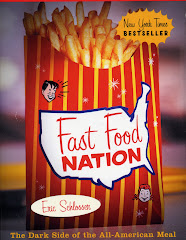
Avalon Park ^^^

My neighborhood ^^^
Observation: Since Avalon is a brand new neighborhood, there were many houses for sale. Every single house matched the beautiful landscape, and though most were uniform in size, some varied in structure slightly. The streets were rather narrow; only two cars could pass by comfortably, and with the driveways of the houses barely able to fit one car, there was an obstacle course of parallel parking that needed to be navigated. The schools seemed to be extremely nice; outdoor pavilions and basketball courts lined the outside, and the building themselves were small, but tall, still trying to conserve land space. Inside the house we observed, which was a 5 bed and 4 bath, I found everything to be...organized. The layout of the house was carefully planned; looking back on my images of the house now I realize that every room had an adequate amount of items in it, like the economy of a story. I laughed when I saw that every book on the bookshelves were classical in origin, leather-bound with fine gold print on the spine. My only question was why the houses were spaced so close together; there was literally less than 5 feet of space between the houses.
Speculation: The main reason I think Avalon is where it is, and not someplace else, is 408. It is near this major highway, allowing all residents relatively easy access to the interconnected system of highways that allows them to travel anywhere. There are many grocery stores and services offered nearby; Avalon really is in the center of a business area.
Analysis: Our interviewee was rather...careful about her answers, avoiding seemingly harmless questions like "What is the main ethnicity of the residents here?" or "And the main religion?". It is understandable that she can't legally answer these questions, but she was a little rude about the entire experience. Otherwise, she acted like she was trying to sell us the house, playing up every aspect of the neighborhood, providing us with a biased answer. It would have been nice to receive an impartial answer to allow us to more accurately depict the neighborhood we studied.
Evaluation: My basic evaluation is that: Avalon was placed where it is because of its location. It is placed in the center of things. There are elementary, middle, and high schools within walking distance, grocery stores and other services down the street, shopping malls within biking distance, and 408 conveniently located nearby. It is the perfect place for a neighborhood because it mitigates the gas costs of traveling by being as close to everything as possible.
Compare and Contrast: The main difference between my neighborhood is the lack of a homeowner's association. The houses in my neighborhood are not uniform in any way; possibly 15% of the lawns are perfectly manicured. The styles differ greatly between the houses, but it generates more of a diverse feeling, rather than what I find to be a constricting housing code. My neighborhood is minuscule compared to the vastness of Avalon park, while we may have 30-35 houses, they get that many houses built each month. However, each of our 30 houses has about an acre of land, providing ample space for a birthday bonfire or a touch-football game. Land in Avalon park costs so much that they must make due with less than 6 ft. of space between houses. Both of the neighborhoods were predominantly white, as far as I have observed in my neighborhood, but the income levels were rather different (I won't elaborate on who has more or less).
To Mr. Rodriguez: I'm not really sure what happened when I tried to post, something went wrong with my Internet around that point. It may have been that my Dad accidentally cut our cable while planting a garden, I'm not entirely sure. But here it is. I expect my grade to drop dramatically tomorrow, but when this is graded, hopefully it'll go back up. Thanks.
